第125章 CENTRAL CHILE:--STRUCTURE OF THE CORDILLERA(20)
I will now describe the nature of the beds, beginning at the base on the eastern side.First, for the clay-slate formation: the slate is generally hard and bluish, with the laminae coated by minute micaceous scales; it alternates many times with a coarse-grained, greenish grauwacke, containing rounded fragments of quartz and bits of slate in a slightly calcareous basis.The slate in the upper part generally becomes purplish, and the cleavage so irregular that the whole consists of mere splinters.Transverse veins of quartz are numerous.At the Calera, some leagues distant, there is a dark crystalline limestone, apparently included in this formation.With the exception of the grauwacke being here more abundant, and the clay-slate less altered, this formation closely resembles that unconformably underlying the porphyries at the western foot of this same range; and likewise that alternating with the porphyritic conglomerate in the main Cordillera.This formation is a considerable one, and extends several leagues southward to near Mendoza: the mountains composed of it rise to a height of about two thousand feet above the edge of the Pampas, or about seven thousand feet above the sea.(I infer this from the height of V.
Vicencio, which was ascertained by Mr.Miers to be 5,328 feet above the sea.)Secondly: the most usual bed on the clay-slate is a coarse, white, slightly calcareous conglomerate, of no great thickness, including broken crystals of feldspar, grains of quartz, and numerous pebbles of brecciated claystone porphyry, but without any pebbles of the underlying clay-slate.I nowhere saw the actual junction between this bed and the clay-slate, though I spent a whole day in endeavouring to discover their relations.In some places Idistinctly saw the white conglomerate and overlying beds inclined at from 25 to 30 degrees to the west, and at the bottom of the same mountain, the clay-slate and grauwacke inclined to the same point, but at an angle from 70 to 80 degrees: in one instance, the clay-slate dipped not only at a different angle, but to a different point from the overlying formation.In these cases the two formations certainly appeared quite unconformable:
moreover, I found in the clay-slate one great, vertical, dike-like fissure, filled up with an indurated whitish tuff, quite similar to some of the upper beds presently to be described; and this shows that the clay-slate must have been consolidated and dislocated before their deposition.On the other hand, the stratification of the slate and grauwacke, in some cases gradually and entirely disappeared in approaching the overlying white conglomerate; in other cases the stratification of the two formations became strictly conformable; and again in other cases, there was some tolerably well characterised clay-slate lying above the conglomerate.(The coarse, mechanical structure of many grauwackes has always appeared to me a difficulty; for the texture of the associated clay-slate and the nature of the embedded organic remains where present, indicate that the whole has been a deep-water deposit.Whence have the sometimes included angular fragments of clay-slate, and the rounded masses of quartz and other rocks, been derived? Many deep-water limestones, it is well known, have been brecciated, and then firmly recemented.) The most probable conclusion appears to be, that after the clay-slate formation had been dislocated and tilted, but whilst under the sea, a fresh and more recent deposition of clay-slate took place, on which the white conglomerate was conformably deposited, with here and there a thin intercalated bed of clay-slate.On this view the white conglomerates and the presently to be described tuffs and lavas are really unconformable to the main part of the clay-slate; and this, as we have seen, certainly is the case with the clay-stone lavas in the valley of Canota, at the western and opposite base of the range.
Thirdly: on the white conglomerate, strata several hundred feet in thickness are superimposed, varying much in nature in short distances: the commonest variety is a white, much indurated tuff, sometimes slightly calcareous, with ferruginous spots and water-lines, often passing into whitish or purplish compact, fine-grained grit or sandstones; other varieties become semi-porcellanic, and tinted faint green or blue; others pass into an indurated shale: most of these varieties are easily fusible.
Fourthly: a bed, about one hundred feet thick of a compact, partially columnar, pale-grey, feldspathic lava, stained with iron, including very numerous crystals of opaque feldspar, and with some crystallised and disseminated calcareous matter.The tufaceous stratum on which this feldspathic lava rests is much hardened, stained purple, and has a spherico-concretionary structure; it here contains a good many pebbles of claystone porphyry.
Fifthly: thin beds, 400 feet in thickness, varying much in nature, consisting of white and ferruginous tuffs, in some parts having a concretionary structure, in others containing rounded grains and a few pebbles of quartz; also passing into hard gritstones and into greenish mudstones: there is, also, much of a bluish-grey and green semi-porcellanic stone.